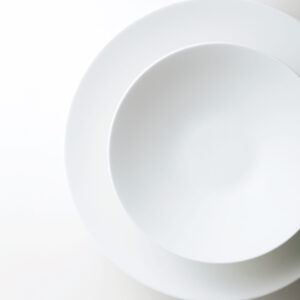
What Is Bone China?
Bone china is a lightweight and durable ceramic. Its unique properties come from the materials it’s made of. These materials include bone ash, feldspar, kaolin, and clay.
Household dinnerware is designed for daily use in informal settings, and has less requirements than commercial dinnerware. In a commercial kitchen, it is important that the dinnerware displays all meals to perfection. Usually, it is not as important for everyday household dinnerware to display food to a high standard, as it is not necessary to please paying customers.
Household dinnerware is also not subject to the same constraints as commercial dinnerware, and may have harder-to-clean designs, or heavier dishes which would not be suitable for a waiter or waitress to repeatedly carry.
At home, you can get away with having a dozen or so matching sets of plates, bowls, cups and cutlery.
In a commercial setting, dinnerware for your restaurant and hotel must be available in large quantities, so you can be certain all your customers receive the same presentation.
As well as the number of pieces required to meet current demand, it’s also advisable to have a number of backup pieces to replace those which are broken over time.
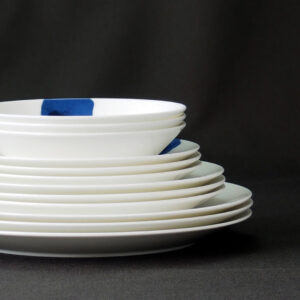
The presentation of a meal has been shown to influence the taste, with finer presentation improving the perceived quality of a meal.
Displaying your chef’s excellent cuisine usually takes up more space than serving food at home, as artistically placed accents and sauces often benefit from a larger canvas.
Commercial sizes of dinnerware can be larger in order to give your food the best presentation.
It’s important that your dinnerware is suitable for use in a high-traffic setting, where it must be carried from kitchen to table by waiters and waitresses who may be carrying these dishes back and forth for hours at a time.
Heavy dinnerware makes it more likely that waiters will have difficulty serving meals, so it’s important to make sure that commercial dinnerware is both lightweight and easy to carry.
Larger plates and steeper sided bowls also help prevent any spillage of a meal during transport.
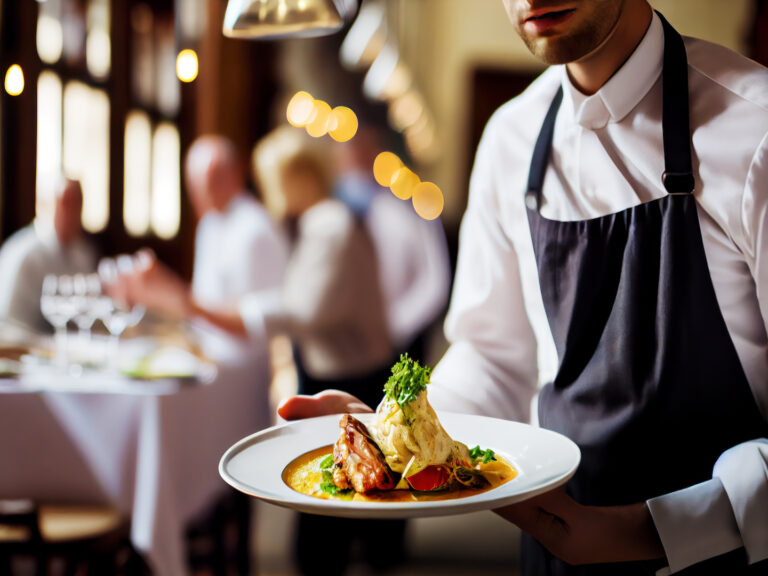
Different materials have advantages and disadvantages in a commercial kitchen. Some common materials used are:
| Material | Description |
|---|---|
| Melamine | Melamine is a food-safe plastic commonly used for dinnerware. It is lightweight, affordable, and can be stored easily. However, it does not have the same gravitas that ceramic and glass dishes provide. |
| Earthenware Ceramics | Earthenware ceramics are made of fired clay and often have a glaze in neutral colors. Earthenware is made from a coarser grit of clay than porcelain, and gives a homely charm to a meal. Dishes made from this material are more likely to chip, but are also seen as more environmentally friendly to produce. |
| Porcelain Ceramics | As one of the highest quality ceramics, porcelain is suitable for use in high-end dinnerware. The very finest ceramic is a thin but incredibly strong porcelain, called bone china. This delicate but durable porcelain is lightweight and easy to carry. Although usually plain white, painted porcelain is culturally significant in many areas, and can give both elegance and meaning to a serving dish. |
| Glass | Glass is a more modern choice of dinnerware material, and is excellent for displaying dishes with detailed presentation. However, glass is easier to scratch and break than ceramic, and care must be taken during cleaning and storage. Large glass serving platters can display the desired aesthetic, while ceramic plates and bowls take the majority of wear and tear. |
The dinnerware you choose should reflect the style of the hotel or restaurant. This helps maintain consistency throughout the dining experience, and allows you to elaborate on the hotel or restaurant’s theme.
Designs which have been commonly adopted over time are referred to as “classic.”
For instance, art nouveau is a style of interior design which was first popularized in the late 1800s, but can still be found in recently renovated buildings due to its ongoing popularity.
Restaurants and hotels following a classical design should be sure to choose dinnerware which matches the overall aesthetic.
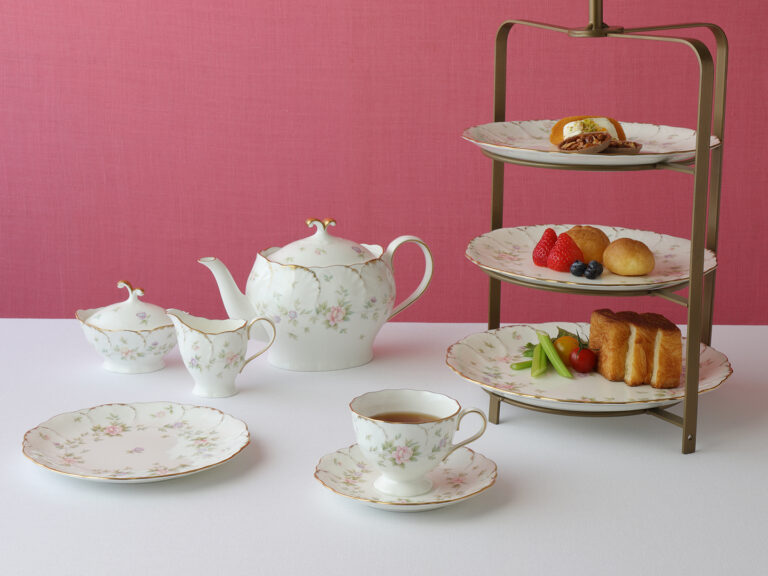
Modern dinnerware is most commonly plain white ceramic.
The flexibility of this design as well as the ability to easily see if the dish has been cleaned correctly makes it a popular choice in hotels and restaurants all over the globe.
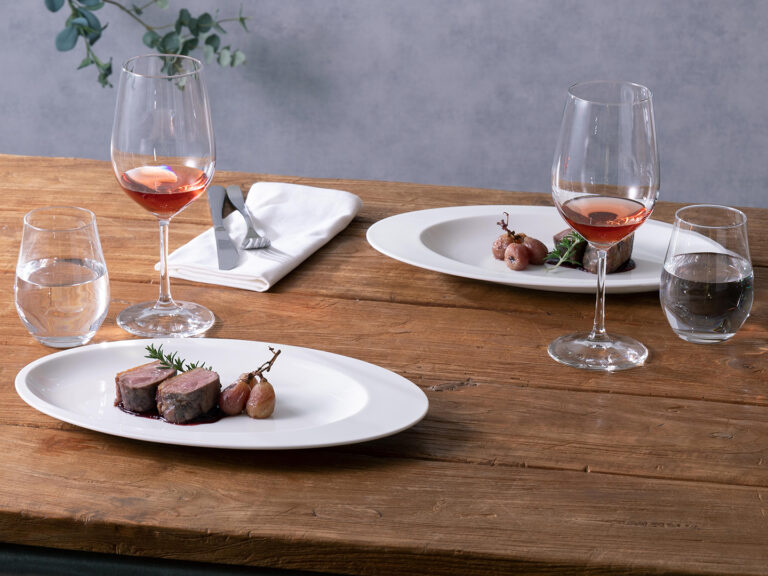
Casual dinnerware is often simply decorated and easy to wash.
Simple shapes and designs allow for a more informal atmosphere without becoming minimalist, while repeated simple designs or color schemes throughout the dinner set tie in with surrounding decor without distracting from the meal.
Elegant dinnerware often features elaborate painted designs, fine porcelain, and metallic accents. Historically these were expensive and challenging to maintain in a commercial setting. Using elegant dinnerware suggests a high level of attention to detail by staff and so elevates the status of the dish.
The atmosphere of a high-end dining establishment must be consistent throughout, or risk looking too gaudy or visually jarring. The complex nature of many elegant styles causes them to clash with other designs, so particular care must be taken to maintain a theme.
The dinnerware you choose should reflect the style of the hotel or restaurant. This helps maintain consistency throughout the dining experience, and allows you to elaborate on the hotel or restaurant’s theme.
Hotel lounge areas allow potential customers to form their first impression of a hotel, so it’s important to maintain a sense of continuity.
Dinnerware in a lounge setting should match the overall decor of the hotel. For instance, if the reception has a modern theme in black with silver detailing, it is advisable to include an element of this in the dinnerware, such as black or silver accents.
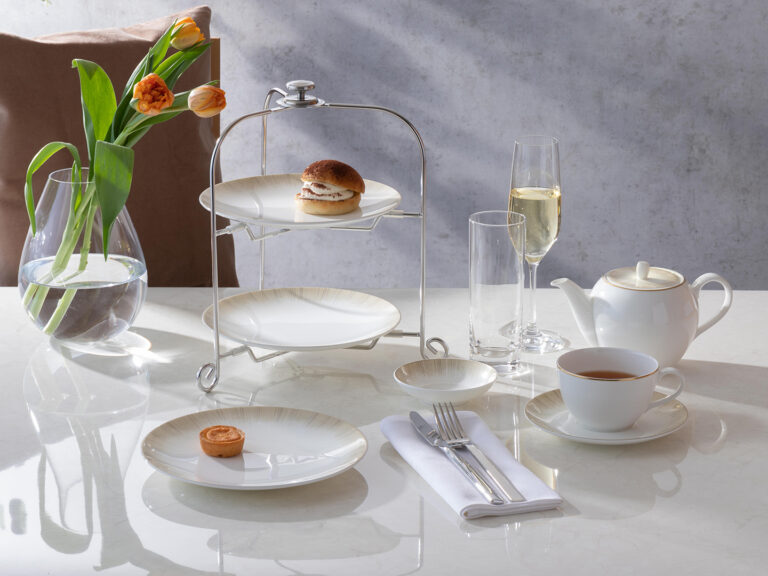
Dinnerware designed for serving large numbers of people needs to be sturdy, easy to carry, and uniform. It’s also important that the dinnerware can be stored in a manner which is compact, easily accessible, and does not scratch the surface of other items.
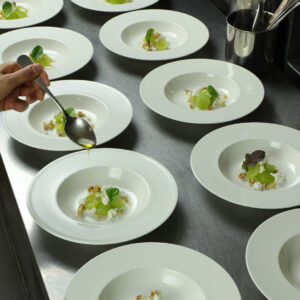
In order to maintain the correct atmosphere, a luxury setting must include luxury tableware.
Dinnerware must be of high quality, and remain in theme with the restaurant or hotel as a whole.
Appearance is key, and some aspects of functionality, such as the ability to be microwaved, may need to be reduced or removed in order to create the appropriate aesthetic.
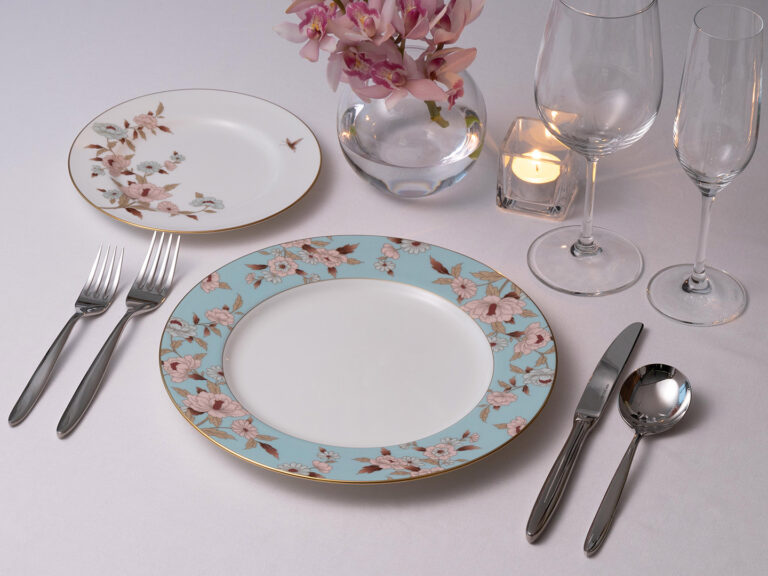
Buffet dining allows for the use of large serving dishes, which are an excellent opportunity to elaborate upon a theme or add a decorative element to a spread.
Dinnerware such as plates and bowls must be sturdy and easy for customers to hold in order to minimize breakage.
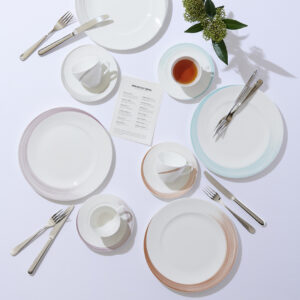
Narumi’s professional dinnerware maintains a balance between ease of use and decorative function, allowing your business to choose the dinnerware which best accentuates your brand without compromising on safety, hygiene, or function.
Our products are available in a range of styles, from minimalist forms to elaborately painted luxury tableware.
Some of the noteworthy designs from our collection include nomadd, a simple yet elegant modern design suitable for many applications; Milano, with its stunning contrast of painted indigo flowers on delicate white porcelain; and RYDGES, which features textured patterns reminiscent mountain ridges, and provides an excellent canvas for a high-quality chef.

Bone china is a lightweight and durable ceramic. Its unique properties come from the materials it’s made of. These materials include bone ash, feldspar, kaolin, and clay.
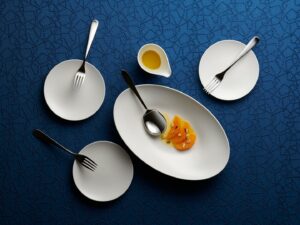
There are mainly 7 differences between bone china and porcelain will be covered below. However, the main differences are that bone china is thinner, lighter, and stronger than porcelain.
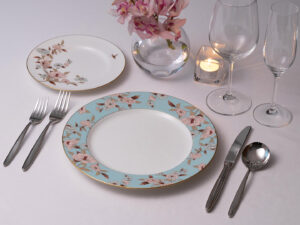
Dinner plates may appear relatively straightforward. However, there are several types you can choose — based o